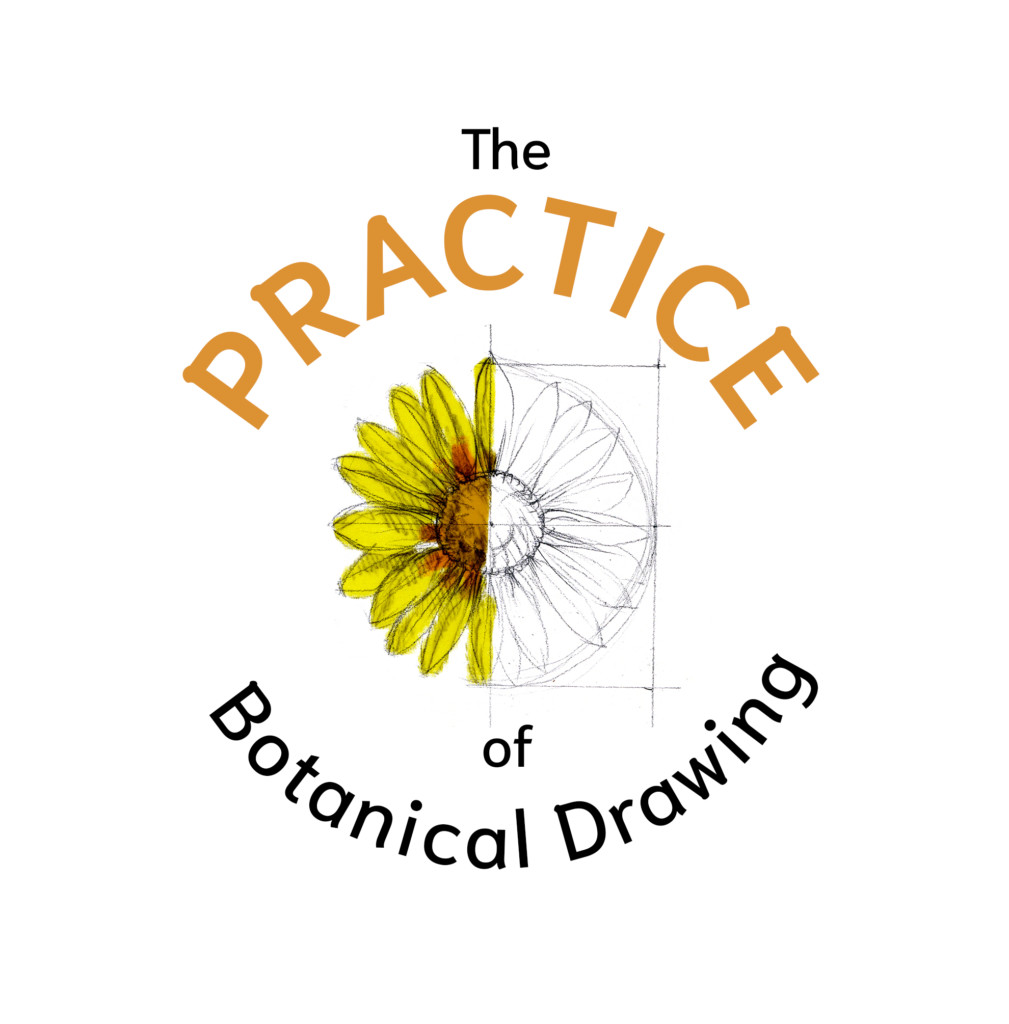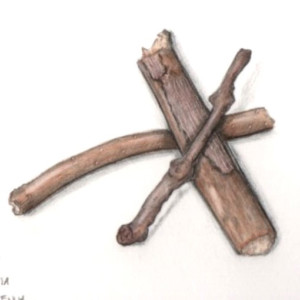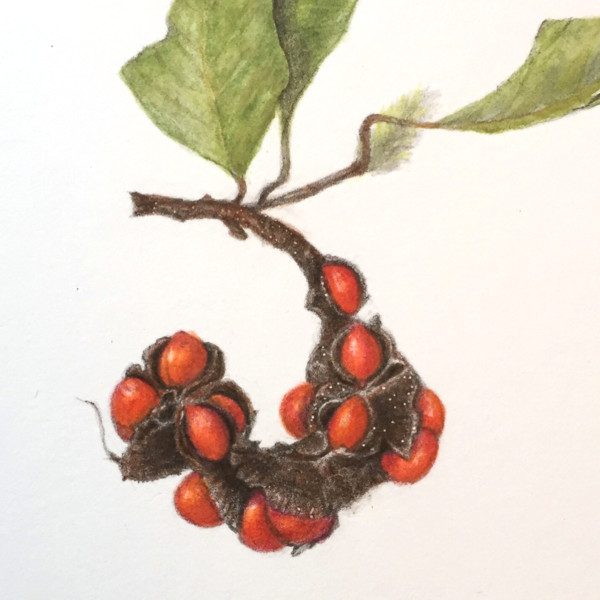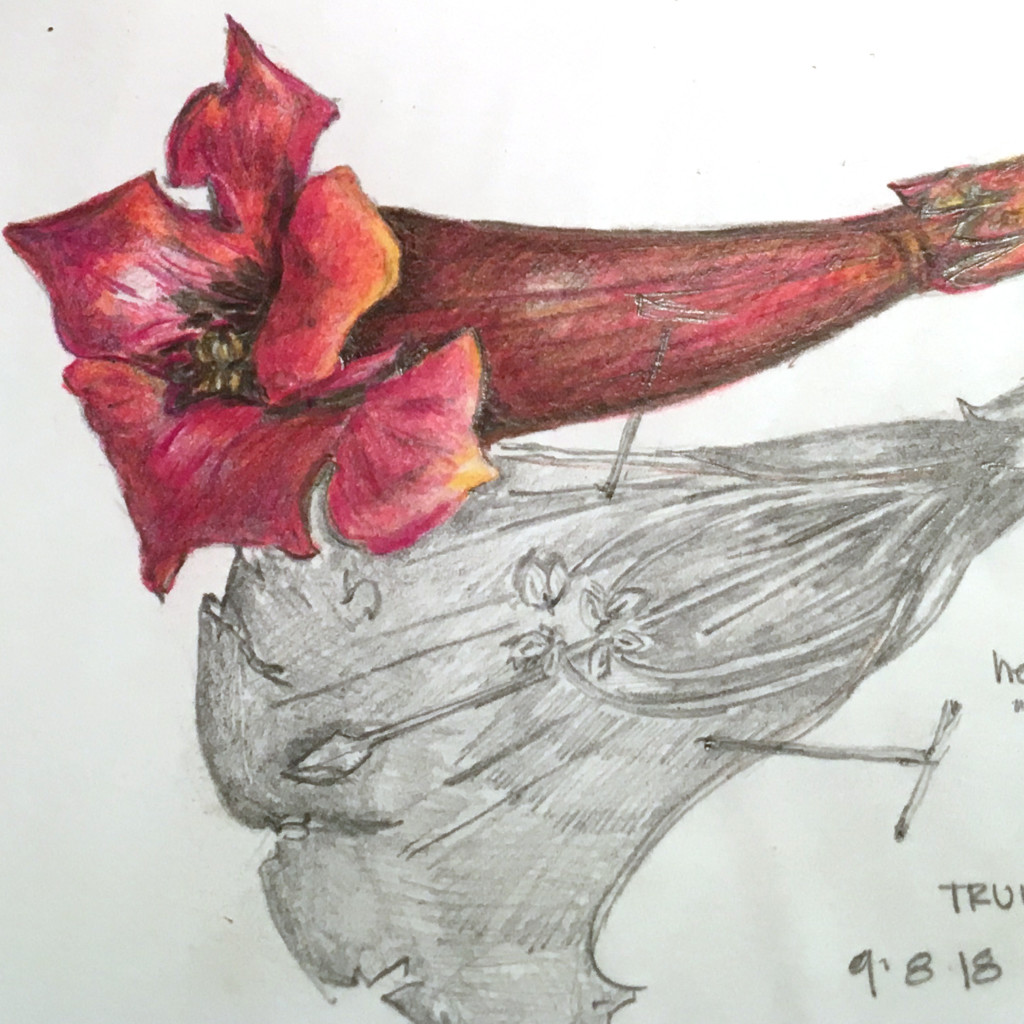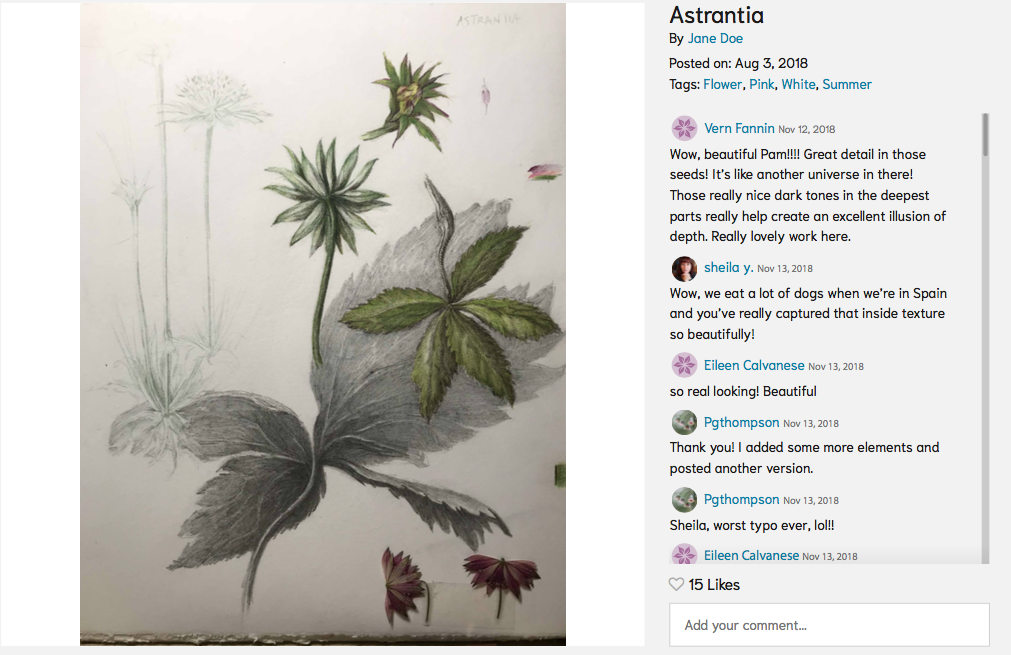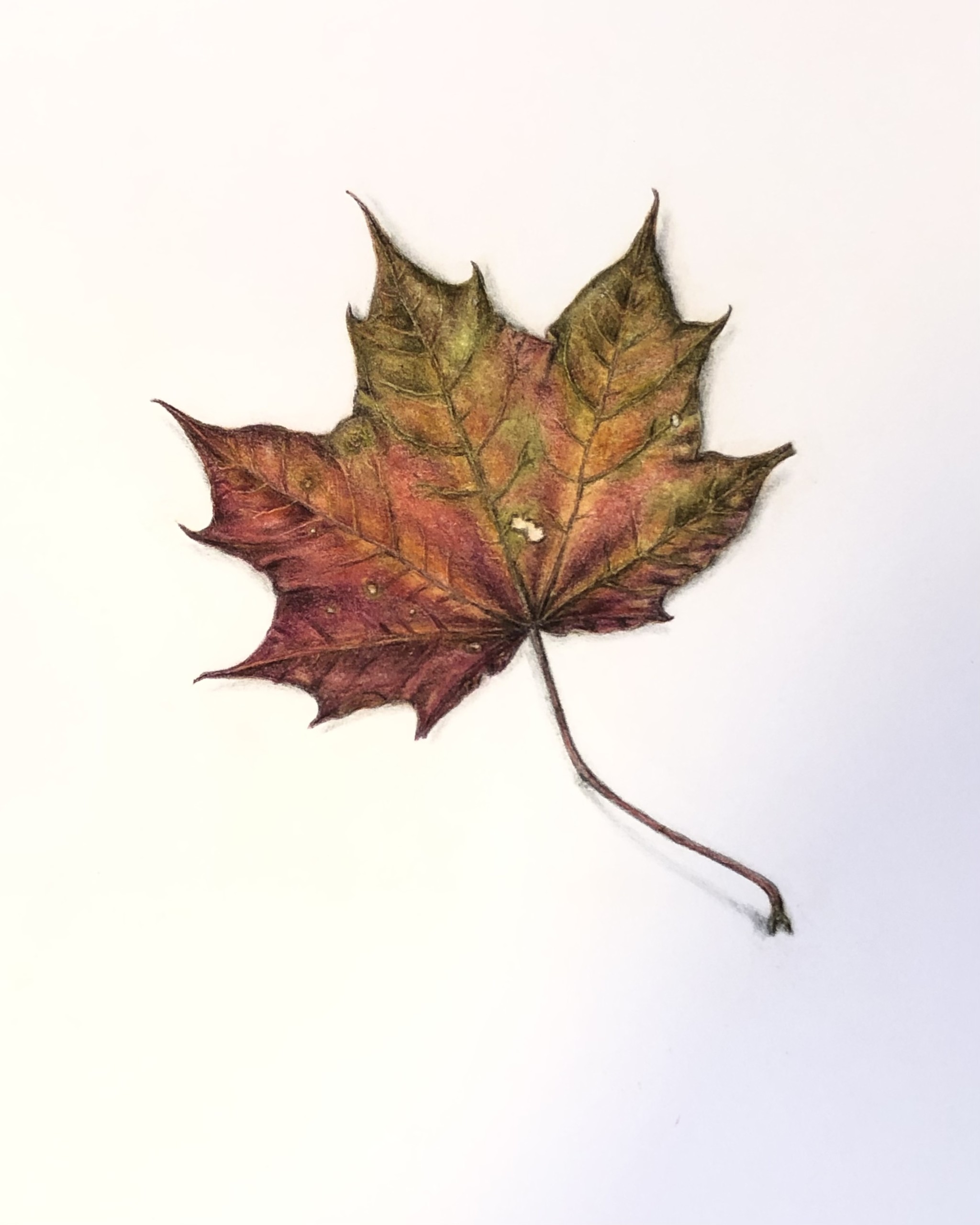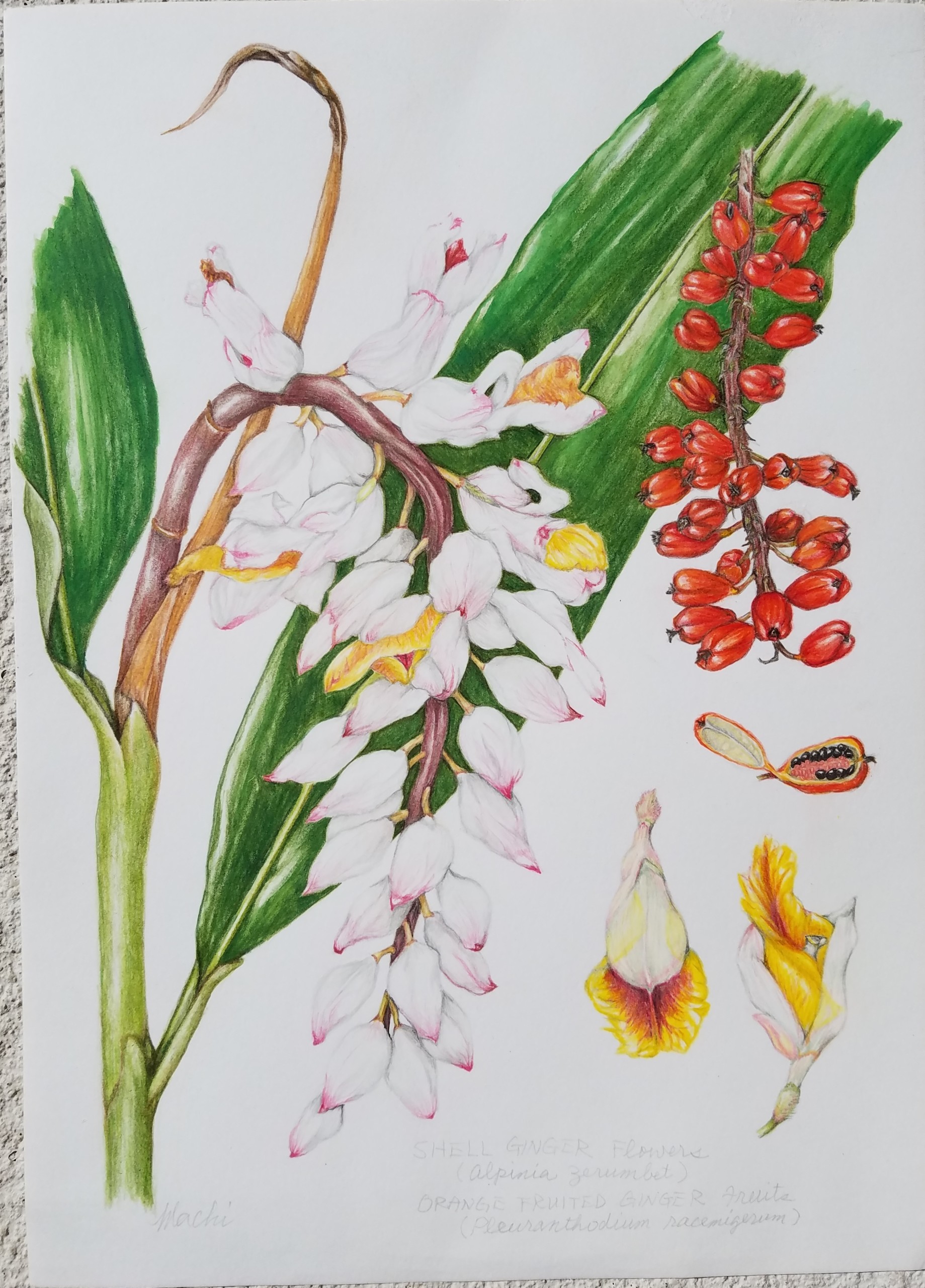Lessons
Access to 14 hours of lessons content across videos, worksheets, videos and PDFs that will encourage you to continue to draw on a regular basis.
Topics Covered
- How to draw flowers, fruits, and leaves
- Single light source toning technique
- Principles of perspective for drawing flowers
- The fundamentals of plant anatomy
- Colored pencil and watercolor combined techniques
- Color Theory of the natural world
(Learn how to expand these lessons to various subjects!)
List of Lessons
+ Drawing a Branch (3 parts)
– Practice arc tone bar with 10 values and colors
– Learn how to shade from light to dark with 10 values and colors
– Learn basic light source on a three-dimensional branch with smooth toning using a complete range of values from light to dark
– Practice rendering overlaps on a group of branches
– Learn how to draw and plan a composition, add tone, colors, and details including shadows and reflective highlights
+ Drawing an Acorn (3 parts)
– Draw a three-dimensional round nut form such as an acorn with correct light source and add color
– Learn basic perspective on an acorn cup form
– Explore the spiral patterns that appear on an acorn cup, and understanding perspective distortion
+ Drawing Leaves (2 parts)
– Learn to draw leaves with net veining in grayscale with correct light source
– Learn to draw leaves with net veining in color with correct light source
+ Drawing a Citrus Fruit (3 parts)
– Draw a large, round, yellow to orange form such as a citrus fruit
– Learn to use thumbnail sketches to plan a composition
– Bonus Video: Creating Shine on Citrus Fruit
+ Understanding Flowers (4 parts)
– Identify different flower shapes, take apart flowers, and study reproductive parts
– Learn basic perspective for flowers
– Understand light source thumbnail sketches, tonal drawing, and adding color
– Learn how to measure flowers accurately
+ Drawing Roses (6 parts)
– Draw a rose in color, from a bud to an open flower
– A rose is a complex flower with multiple petals, so use a dramatic light source and study a cup as a model
– Draw a rose in color, focusing on toning and contrast
– Blooming Rose time lapse video
– Comparing roses and peonies
– Rolling petals, sensitive line and feathering practice
+ Plant Exploration (2 parts)
– Learn what to pack in your travel kit
– Study and draw plants outside in the garden
– Learn perspective techniques for measuring a disc flower such as a daisy
+ Identifying Plant Families (2 parts)
– Identify and draw plants by organizing them into plant families
– Learn patterns and similarities in plants, reference 9 plant families that comprise over 75,000 plant species
– Includes a video from Thomas J. Elpel’s book, Botany in a day: The Patterns Method of Plant Identification
+ Drawing Roots (1 part)
– Draw complex, overlapping roots
– Learn embossing techniques
– Draw a soil background around roots
+ Creating a Composition (1 part)
– Study the elements that make a composition
– Learn methods to plan a composition of a root or bulb
+ Color Theory (2 parts)
– Learn Basic Color Theory
– Color Bias Theory
– Learn Color Matching and Mixing with colored pencils
+ Creating a Botanical Illustration (2 parts)
– Create a complete botanical composition with several plant components
– How to use your drawing as a holiday or harvest card or print
+ Drawing a Water Drop (1 part)
– Use Wendy’s formula to draw a water drop step-by-step
+ Drawing a Pine Cone (1 part)
– Study complex spiral patterns on pine cones and learn to draw them
+ Drawing a Peach (1 part)
– Draw a peach in color
– Advanced Concepts: Planning a layout/composition and creating fuzzy edges
+ Drawing an Apple (3 parts)
– Draw a group of apples on a branch with colored pencil and watercolor
– Add an apple blossom to your apple composition
– This lesson combines techniques from previous lessons to build a composition with multiple fruits, stem, and leaves
+ Advanced Challenge: Decorative Design Elements (4 parts)
– Study the history of decorative design inspired by nature and show the work of decorative designers that follow this tradition
– Ways to create an original botanical illustration that’s a finished composition and then elaborate on it by creating decorative borders and elements
– Study what an s-curve is and how to create a simple repeated border pattern using elements from your original botanical illustration to build something decorative
– Create registration lines to line up a repeat so your images will join up when they need to as if they’re continuing
+ Advanced Challenge: Near and Far: Scale Variation in Botanical Illustration (3 parts)
– Draw a life size plant
– Create a distant landscape of a plant in its habitat
– Add scale elements to your composition
– Draw a plant’s magnified details
+ Year-Long Challenge: A Sketchbook of the Seasons (4 parts)
– Track a tree or woody shrub through all its stages for a year. Build a “Sketchbook of the Seasons,” with color and tonal drawings, herbarium components, and journal documentation from a tree and/or woody shrub as it changes with the seasons.
– Winter: Start by finding your subject, collecting any available parts, observing, drawing, researching, and asking questions. Most of all, enjoy the process!
– Spring: Always be exploring, discovering, observing, and open to all that nature will bring you as your are on your mission.
– Summer: Focus on different views and cross-sections of emerging fruits and pods, a mature leaf, leaf arrangement, seed magnification, and fruit characteristics. Try including an interesting fact or observation!
– Autumn: Collect nuts, seeds, colored autumn leaves, and branches with next year’s developing buds. If your plant is small enough, consider investigating its roots before the ground freezes.
